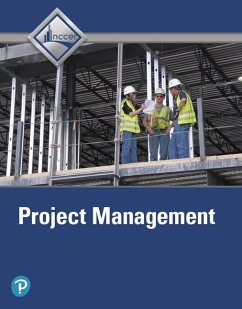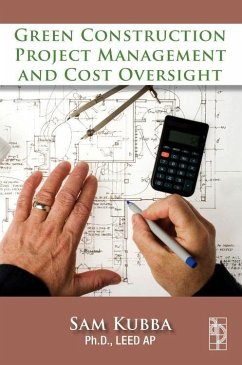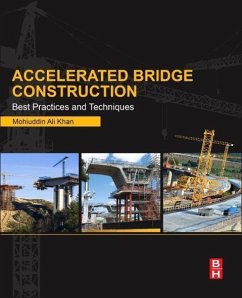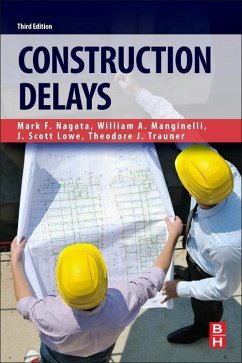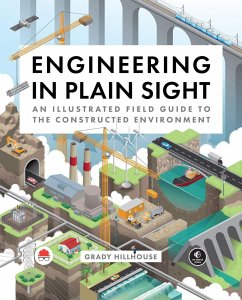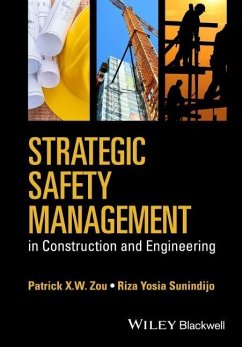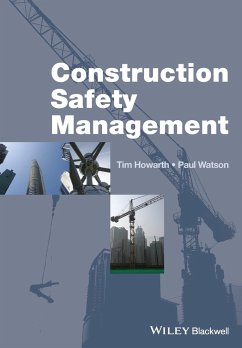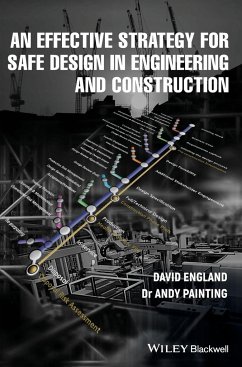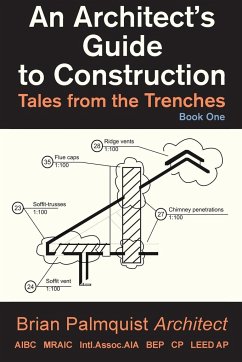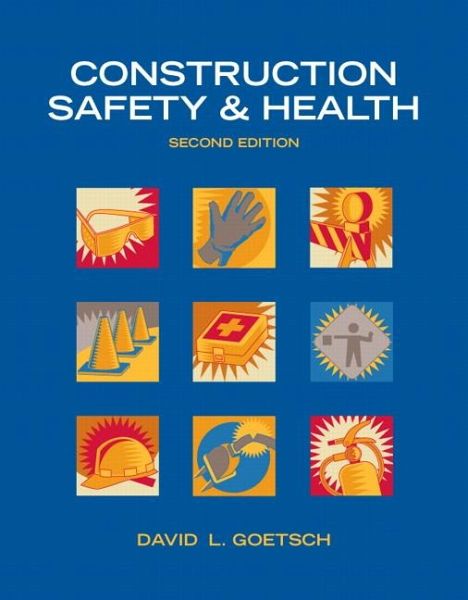
Construction Safety & Health
Versandkostenfrei!
Nicht lieferbar
For courses in construc Product Description
This up-to-date and practical teaching resource makes the theories and principles of construction safety and health useful in a real-world setting, and integrates up-to-the-minute research throughout. Direct and straightforward, CONSTRUCTION SAFETY & HEALTH, 2/e focuses on the specific needs of modern construction professionals and on the requirements set forth by OSHA and other regulators., Each chapter focuses on one key area of concern, and chapters are sequenced to reflect the typical organization of college-level construction safety and health courses. Extensive updates include: LEED accreditation; effects of design on construction safety; new material on ergonomics, human factors, and behavior-based safety; and much more. Every chapter includes review questions, listings of key terms and concepts, and activities promoting critical thinking, discussion, and hands-on application.
Features + Benefits
For courses in construction safety and health at any university, college, community college, technical school, or corporate training environment, as part of programs in construction engineering, construction technology, construction management, or various construction-related trades.
This up-to-date and practical teaching resource makes the theories and principles of construction safety and health useful in a real-world setting, and integrates up-to-the-minute research throughout. Direct and straightforward, it focuses on the specific needs of modern construction professionals and on the requirements set forth by OSHA and other regulators., Each chapter focuses on one key area of concern, and chapters are sequenced to reflect the typical organization of college-level construction safety and health courses. Extensive updates include: LEED accreditation; effects of design on construction safety; new material on ergonomics, human factors, and behavior-based safety; and much more. Every chapter includes review questions, listings of key terms and concepts, and activities promoting critical thinking, discussion, and hands-on application.
Hallmark Features
Gives students a single authoritative source for all contemporary information on construction safety and health. Covers everythingconstruction managers, engineers, and technologists should know about safety and health, from accident causes to OSHA regulations, recordkeeping to emergency response.
Engages students in critical thinking, discussion, and hands-on learning. Contains carefully crafted exercises in every chapter designed to promote deeper engagement and more active learning.
Supports students no matter what type of construction they will engage in. Presents specific examples and coverage associated with residential, commercial, industrial, and infrastructure-related construction.
Helps students place their health and safety work in realistic context. Includes coverage of key issues ranging from cost-justifying health and safety measures to promoting safety when team members are under pressure to meet budgets and schedules.
Prepares students for the latest trends and challenges they will face in the construction workplace. Includes up-to-date coverage of key emerging issues ranging from workplace violence to bloodborne pathogens.
Helps students build a consensus for safety in their workplaces. Includes thorough coverage of every tool available for promoting safety in the workplace, including rules and regulations, employee participation, safety training, suggestion programs, visual awareness, incentives, competitions, teamwork, and more.
Prepares students to face thorny issues of ethics and corporate responsibility. Covers the challenges of ethical behavior in organizations; construction profssionals' roles and responsibilities; questions to ask when making decisions; and the question of whistleblowing.
Introduction: Safety Movement and the Construction Industry
Part 1. Theories and Concepts
1. Cost of Accidents: Why Safety is Important
2. Role of Construction Personnel in Safety and Health
3. Accident Causation Theories
4. Ethics and Safety
5. Workers' Compensation
6. OSHA Compliance
Part 2. OSHA's Construction Standard and Related Safety Practices
7. Subparts A through E and Related Safety Practices
8. Subparts F through J and Related Safety Practices
9. Subparts K through O and Related Safety Practices
10. Subparts P through U and Related Safety Practices
11. Subparts V through Z and Related Safety Practices
Part 3. Application on the Job
12. Construction Safety and Health: Program and Policies
13. J Hazard Analysis and Construction Equipment Safety
14. Accident Investigation, Reporting, and Record Keeping
15. Emergency Response Plan
16. Total Safety Management
Part 4. Other Safety and Health Issues and Practices
17. Preventing Violence in the Workplace
18. Bloodborne Pathogens in the Workplace
19. Stress, Ergonomics, and Behavior-Based Safety
20. Environmental Safety and ISO 14000
21. Promoting Safety
Glossary
Index
This up-to-date and practical teaching resource makes the theories and principles of construction safety and health useful in a real-world setting, and integrates up-to-the-minute research throughout. Direct and straightforward, CONSTRUCTION SAFETY & HEALTH, 2/e focuses on the specific needs of modern construction professionals and on the requirements set forth by OSHA and other regulators., Each chapter focuses on one key area of concern, and chapters are sequenced to reflect the typical organization of college-level construction safety and health courses. Extensive updates include: LEED accreditation; effects of design on construction safety; new material on ergonomics, human factors, and behavior-based safety; and much more. Every chapter includes review questions, listings of key terms and concepts, and activities promoting critical thinking, discussion, and hands-on application.
Features + Benefits
For courses in construction safety and health at any university, college, community college, technical school, or corporate training environment, as part of programs in construction engineering, construction technology, construction management, or various construction-related trades.
This up-to-date and practical teaching resource makes the theories and principles of construction safety and health useful in a real-world setting, and integrates up-to-the-minute research throughout. Direct and straightforward, it focuses on the specific needs of modern construction professionals and on the requirements set forth by OSHA and other regulators., Each chapter focuses on one key area of concern, and chapters are sequenced to reflect the typical organization of college-level construction safety and health courses. Extensive updates include: LEED accreditation; effects of design on construction safety; new material on ergonomics, human factors, and behavior-based safety; and much more. Every chapter includes review questions, listings of key terms and concepts, and activities promoting critical thinking, discussion, and hands-on application.
Hallmark Features
Gives students a single authoritative source for all contemporary information on construction safety and health. Covers everythingconstruction managers, engineers, and technologists should know about safety and health, from accident causes to OSHA regulations, recordkeeping to emergency response.
Engages students in critical thinking, discussion, and hands-on learning. Contains carefully crafted exercises in every chapter designed to promote deeper engagement and more active learning.
Supports students no matter what type of construction they will engage in. Presents specific examples and coverage associated with residential, commercial, industrial, and infrastructure-related construction.
Helps students place their health and safety work in realistic context. Includes coverage of key issues ranging from cost-justifying health and safety measures to promoting safety when team members are under pressure to meet budgets and schedules.
Prepares students for the latest trends and challenges they will face in the construction workplace. Includes up-to-date coverage of key emerging issues ranging from workplace violence to bloodborne pathogens.
Helps students build a consensus for safety in their workplaces. Includes thorough coverage of every tool available for promoting safety in the workplace, including rules and regulations, employee participation, safety training, suggestion programs, visual awareness, incentives, competitions, teamwork, and more.
Prepares students to face thorny issues of ethics and corporate responsibility. Covers the challenges of ethical behavior in organizations; construction profssionals' roles and responsibilities; questions to ask when making decisions; and the question of whistleblowing.
Introduction: Safety Movement and the Construction Industry
Part 1. Theories and Concepts
1. Cost of Accidents: Why Safety is Important
2. Role of Construction Personnel in Safety and Health
3. Accident Causation Theories
4. Ethics and Safety
5. Workers' Compensation
6. OSHA Compliance
Part 2. OSHA's Construction Standard and Related Safety Practices
7. Subparts A through E and Related Safety Practices
8. Subparts F through J and Related Safety Practices
9. Subparts K through O and Related Safety Practices
10. Subparts P through U and Related Safety Practices
11. Subparts V through Z and Related Safety Practices
Part 3. Application on the Job
12. Construction Safety and Health: Program and Policies
13. J Hazard Analysis and Construction Equipment Safety
14. Accident Investigation, Reporting, and Record Keeping
15. Emergency Response Plan
16. Total Safety Management
Part 4. Other Safety and Health Issues and Practices
17. Preventing Violence in the Workplace
18. Bloodborne Pathogens in the Workplace
19. Stress, Ergonomics, and Behavior-Based Safety
20. Environmental Safety and ISO 14000
21. Promoting Safety
Glossary
Index
For courses in construction safety and health at any university, college, community college, technical school, or corporate training environment, as part of programs in construction engineering, construction technology, construction management, or various construction-related trades. This up-to-date and practical teaching resource makes the theories and principles of construction safety and health useful in a real-world setting, and integrates up-to-the-minute research throughout. Direct and straightforward, it focuses on the specific needs of modern construction professionals and on the requirements set forth by OSHA and other regulators., Each chapter focuses on one key area of concern, and chapters are sequenced to reflect the typical organization of college-level construction safety and health courses. Extensive updates include: LEED accreditation; effects of design on construction safety; new material on ergonomics, human factors, and behavior-based safety; and much more. Every chapter includes review questions, listings of key terms and concepts, and activities promoting critical thinking, discussion, and hands-on application. Student resources are available on the companion website www.pearsonhighered.com/careersresources/.




